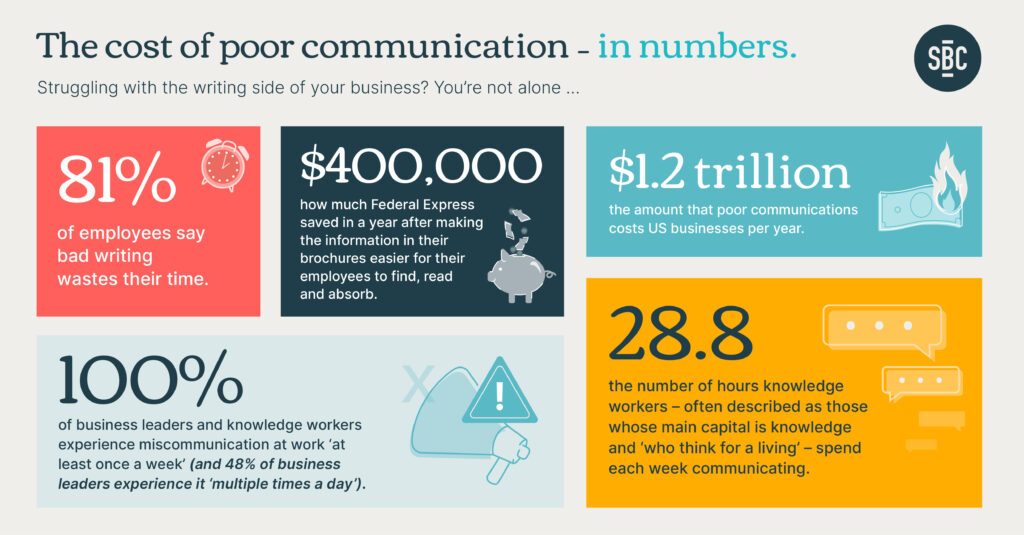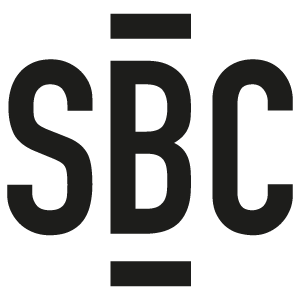The business communication figures are in and they make for alarming reading.
According to the State of Business Communication 2023 report, we now spend 53.4% of our working week writing. Yet communication is 12% less effective than it was last year.
Time spent communicating? Up. Effectiveness of that communication? Down.
Not a happy equation.
And here’s some even more unhappy maths. Ineffective business communications costs $12, 505 per employee, per year in the US alone. And business communication is important – in fact, it’s second on the list of the 10 skills companies need most on LinkedIn’s 2023 Workplace Learning Report.
Whatever you’re writing – an email, a message on Teams, an epoch-defining presentation –– you’ll want to get your message across in the right way. Improving how you write will benefit both you and the wider team, especially so if you’re regularly connecting with specific stakeholders.
So, how can techniques from behavioural and brain science help your business writing? Here are five-and-a-bit benefits.
1. You’ll connect better (and have greater impact when you do).
Any form of business communication is human-to-human. This is as true for an ad, a social post, or a hulking 150-page report. Using techniques gathered from the science of actually understanding how humans behave, then, is a sure-fire way of making better connections using the words you put out into the world.
And science shows how to make the words we use have an impact. Take the title of this post, for instance. What’s that ¾ doing there? Okay, so we wanted to make a point that we thought wasn’t quite as strong as the standouts. But we’ve also considered the bizarreness effect. We’re drawn to – and remember – the unusual. Having five reasons is fine … yet unsurprising. But five and ¾ reasons? That’s novel – and it’s been shown that novelty ‘spurs the brain’ (specifically the substantia nigra/ventral tegmental area, if you’re into that kind of thing).
2. You’ll cut through noise.
Look up any model of communication worth its salt – the Shannon-Weaver (1948) model is a good start – and you’ll see a big, fuzzy area between the messenger and the receiver. This messy area is noise. And techniques that come from science help show us how to slice through it. The result? Messages come through that are clearer, hit home harder and are remembered better.
3. You’ll stand out from the rest.
Behavioural science is here to stay. As we’ve said elsewhere, those who don’t use behavioural science in their day-to-day working lives, including writing, will be overtaken by the ones who do. Want to outshine your competitors and perform better? Make sure the scaffolding supporting all your business communications is scientific.

4. You’ll be bursting with confidence (hopefully).
Most of us want to be more sure–footed in our writing. Science can show us how.
For example, we’re firm fans of fluency effects. If something’s easy to read, it’s easy to do (and also ‘pretty, good and true’, according to academics Song and Schwartz). Part of that means: use short sentences. And fill them with short words. Not only will your messages be smoother and more easily absorbed but those using short words are thought of as smarter. So we’ve used plenty of fluency effects in writing this up. We’ve also dabbed curiosity effects around –– see how many questions we’ve sprinkled in? And there’s plenty of chunking – splitting up information into more digestible chunks – as we know it’s been shown to please working memory and reduce cognitive load.
Okay, perhaps that’s enough secrets for now.
But knowing how and why to do these things makes writing a bit easier. Because, let’s face it, it isn’t always. Often you’ll sit down to write and feel hijacked by a gang of ugly feelings. You know the ones. Pressure. Self– doubt. Tightness. Maybe even a bit of fear. But writing with the power of science behind you can be confidence boosting.
And confident writers are reported to:
- be more self-assured in their work
- have better mental well– being at work
- be more engaged in their role.
Which, to us, is a whole lot of good.
5. You’ll tailor your messages for different audiences like a pro.
There are dozens of techniques from the brain and behavioural sciences that you can use to improve how your message lands. We’ve talked about fluency effects and how they can make us better understood. But what about some of the others? Will your readers be put off (or knocked off their feet) by some light humour effects? Should you use the Keats’ Heuristic by making your headings, slogans and social posts rhyme (and hence more memorable and believable). Drilling down into what bits of science you use – and why – will mine rich rewards when getting your points across.
5 ¾. You’ll fall in love with behavioural science.
Okay, we’re pushing it a bit with this one. But in learning and using these techniques, you’ll come across a lot of recent developments from the social and behavioural sciences. And, honestly, it’s mostly gripping. So, when it comes to polishing your science-backed skills, expect to discover a love of academic papers, research studies and neuroscience.





